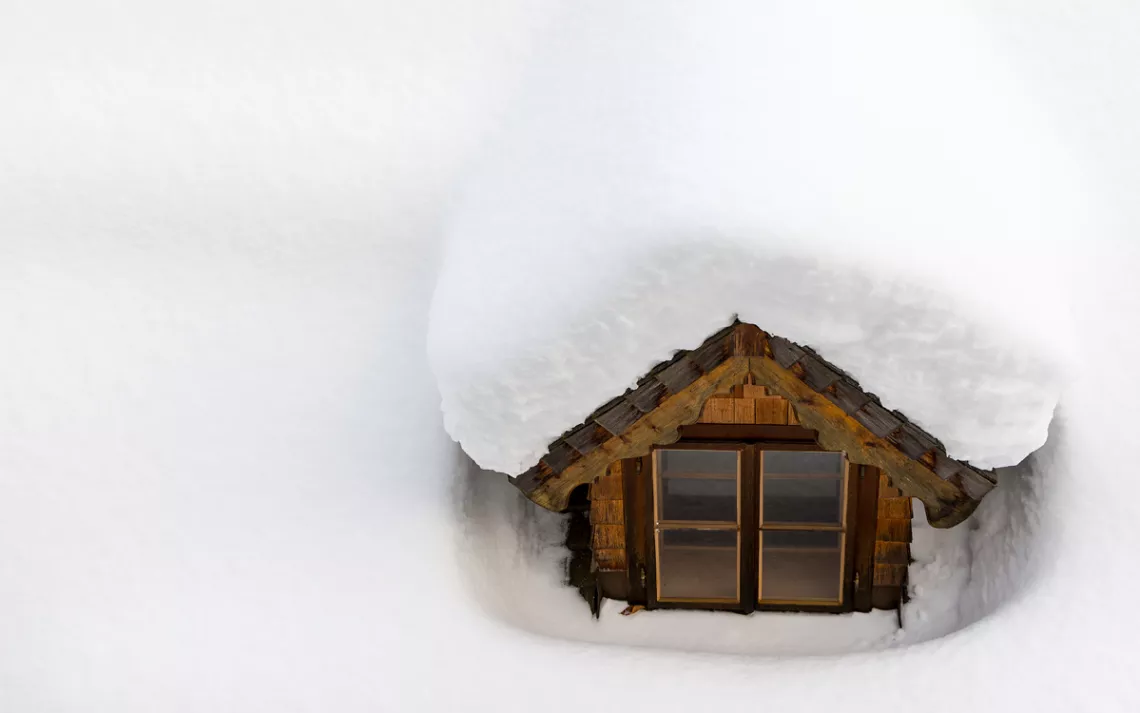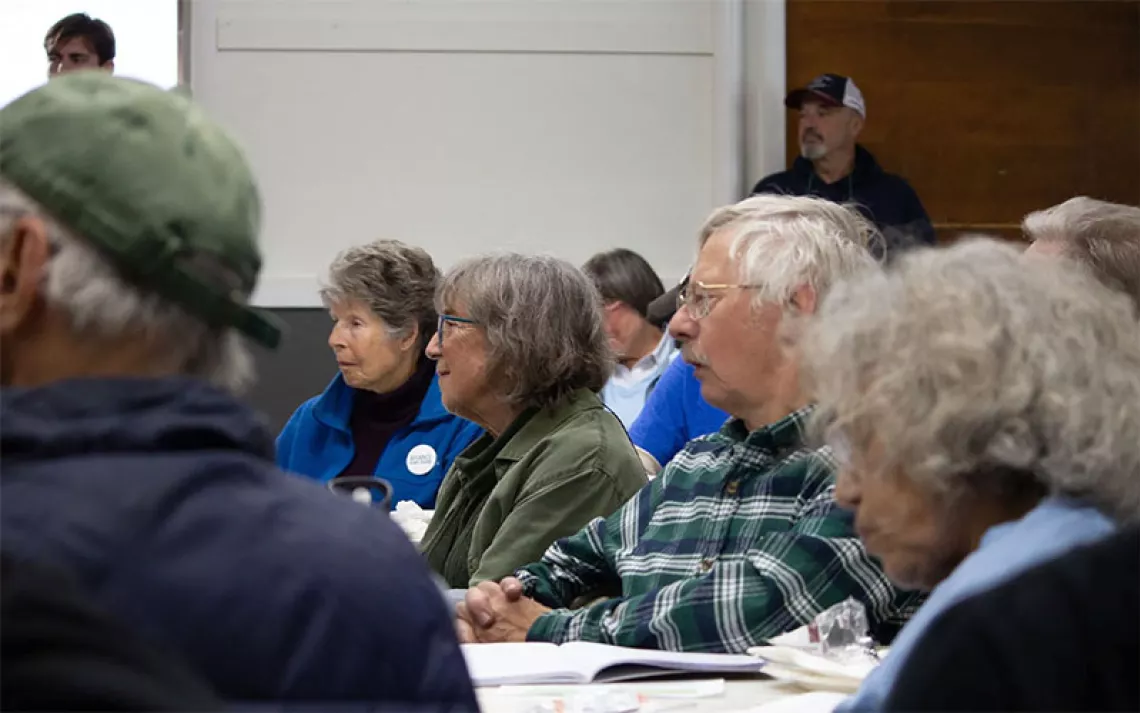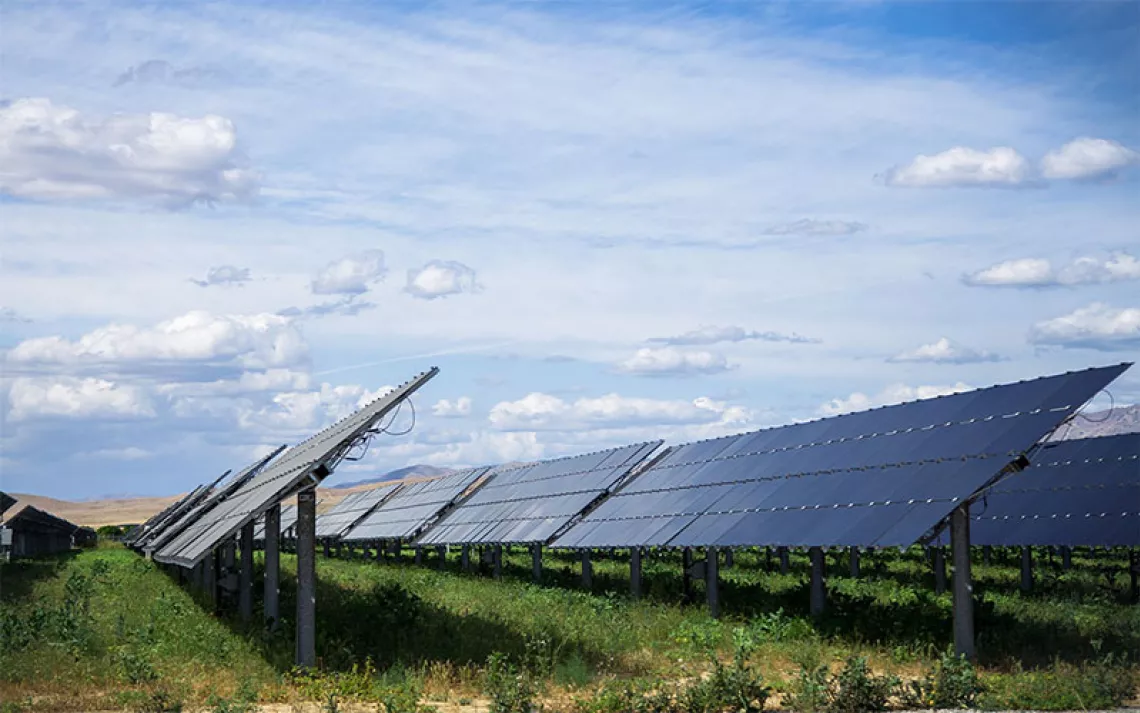Want to Go Off-Grid? Don’t Buy a Big House.
How our family’s quest to go carbon neutral hit a very big snag

Photo by iStock | Victority
Just before the pandemic, we bought a house in rural California. We were five people, an elderly husky mix, and varying numbers of—theoretically outdoor—chickens. The 1950s sprawling wooden hobbit hole of a home we bought needed a lot of work, but the yard was amazing, with mature fruit trees, a deep well with tasty water, and a little creek fed by Sierra snowmelt. We had a limited time window to find a house in a market with fewer than five remotely suitable properties on the market at any one time, and we felt lucky to find such a pleasant place.
The house had potential in other ways too. It was located on an acre lot, with high-desert, year-round sun. If we added solar and replaced the house’s existing propane-fueled appliances, we could completely convert the house to renewable energy.
Easier said than done.
Installing solar wasn’t without hiccups. Problem number one: Solar panels need to face south to capitalize on sunlight throughout the year. But our south-facing rooftop was shaded by a tree in the neighbor’s yard. In my experience, neighbors dislike anyone messing with their trees, but once we screwed up our courage to knock on our retiree neighbor’s door in the throes of pandemic isolation, he was absolutely delightful. He called it a “weed tree” and wanted nothing in exchange for allowing us to prune it, so that was lucky. My partner was able to climb the tree and do the work himself, saving on hiring an arborist.
Problem number two: Our roof was covered in wood shake, and the solar company wouldn’t install onto shake. We replaced the wood shingles with asphalt shingles ourselves. This first meant so many wheelbarrow trips of filthy, tar-encrusted shingles and nails to a rented dumpster, with us bribing the older kid with Minecraft to help.
With the panels working, it was now possible to sell more electricity than we were using. In 2021, our 16 panels produced more than 10,000 kilowatt-hours, while we only used roughly 3,400 kWh. By the end of the year, our utility, Southern California Edison, would pay us hundreds of dollars for the power we were generating.
We began using the Sunpower app, offered by the solar panel company, which told us how much electricity we were producing and using in real-time. This was immediately followed by the discovery that our new electric clothes dryer—which we brought with us because it’s hard to buy appliances out here—used a shocking amount of energy. We have the space and climate to hang our clothes out to dry, which is a good, if annoyingly time-consuming, alternative. Honestly it’s so dry here, you might get away with hanging the wet clothes directly in the closet. Our oven turned out to be a complete energy hog, so when we were feeling very well-behaved, we aligned our baking hours with the sunniest, electricity-producing ones. The water pump that pulls water out of the stream to irrigate the yard also made the shame list; pumping water is hard electrical work. Our LED lights and computers used negligible electricity.
The panels made us carbon neutral in the summer, but with a catch. Every summer, the midday temps can push way above 100°F outside regularly. We inherited two swamp coolers, which were cheap and used a fraction of the energy that air conditioning would. But they were the technological equivalent of waving a wet sheet around the house. They had just two settings: blowing and blowing a bit harder. No thermostat. It was the opposite of climate control—more like “climate hoping.” We felt lucky if we could keep temperatures below 80°F indoors, and that involved opening all the windows in the evening to passively cool the house overnight and shutting them all again every morning.
Even as we sweltered, we knew winter was coming back soon. We had friends who raved about the “mini-splits” they had installed, which allowed them to use the electricity from their solar panels to heat their home as well as cool it. But they lived in milder climates. Out here in the high desert, where winter temperatures routinely dropped to the teens, we would need to buy more expensive systems. After we just forked over the money for panels, a new water heater, and a new roof, the upfront cost for mini-splits was alarming, probably more than $30,000 for a house of this size (more on that later). By the time winter returned, we were still “only” equipped with the wood pellet stove in one room, a fireplace in the other, and the two (two!) propane furnaces that had come with the place. We stopped using one of the furnaces entirely because the ductwork needed serious repairs. Instead, we only heated the bedrooms and living room and huddled pathetically in parkas everywhere else. Our kitchen could be as cold as 50°F.
A $50 electric space heater that could be moved from room to room became the source of somewhat comical family conflict over who got to the space heater first once the sun set and it got even colder. I might spend 20 minutes hunting for it, only to realize someone had hidden it at their feet under their desk. When you spend winter months homeschooling with family you cannot escape, you get a lot of opportunities to huddle in your parka and scheme space heater domination.
Heating the house is our biggest obstacle to carbon neutrality. We aren’t alone in this—most home energy used in the US goes to heating and cooling, and those of us who live in more extreme climates use significantly more. In 2020, homes in North Dakota consumed, on average, more than four times the electricity and more than three times the total energy of the average home in Hawai'i, according to the US Energy Information Administration. While some of that has to do with details like average home size (the average house in Hawai'i isn’t as large as a home in North Dakota), heating is no small part of the equation.
*
Figuring out the next steps toward our goal of energy self-sufficiency is complicated. If we do manage to install a mini-split system, we’ll be able to stop using propane. Yet, we may need to install more solar panels to run the mini-splits and charge the electric car we hope to get in the next year. One of us is obsessed with the solar car that Aptera will be releasing next year—a solar car would skirt the need for more panels but is an unknown financial risk.
If we invest in a battery, that could help balance our energy use and keep us in electricity when the power goes out. But at $10,000 or more, with a possible lifetime of about 10 years, a battery didn’t seem worth it. We decided it was better to weather power outages along with everyone else and save the money for a mini-split system, more efficient appliances, energy efficiency upgrades to the house, or that car. Our next investment will be spending about $4,000 on a fireplace insert—essentially, a high- efficiency wood-burning stove installed inside our existing fireplace. It will emit some CO2 but also maximize retention of heat from fires, reduce the draft through the chimney flue, and make the house more energy efficient overall.
*
We have learned one major lesson during this process: If you want to get to zero emissions, start by not buying a 3,000-square-foot house.
We–probably–don’t regret buying this place. We were hoping to find something in the 1,800-to-2,200-square-foot range, but nothing was available in our town, with a regional population of 10,000. As with most homebuyers, building a house from scratch was not an option.
And finding a house that is small enough to heat and cool efficiently is not easy these days; we are hardly alone. The median size of new, single-family homes was 2,273 square feet in 2021, according to the US Census Bureau, meaning half of new homes are bigger than that size. America shifted to building bigger, single-family homes in the early 1990s and never looked back, even as the average number of people in a household continues to decline.
When we set out to reduce the emissions of a house that was nearly twice as large as what we actually needed, all considerations were doubled. We had double the lightbulbs to be replaced with LEDs (so many recessed lights, outdoor lights, plus the 12 tiny lights in the ridiculous wagon-wheel candelabra). We had twice as many appliances to convert to electric or replace with better energy ratings. Happily, our home did come with dual-glazed windows, but the house still had double the cracks where hot or cold air can sneak in. Double the number of doors—we have an unbelievable six exterior doors—that children and the dog leave open when it is 19°F or 108°F, letting in the heat or cold and the chickens (and sometimes frogs, and once three wild ducks that ran around the living room, quacking and pooping).
One last problem to mention: A big house needs more maintenance, for which one requires well-disciplined children, free time, and/or hired help. If you have to have a gardener or a housecleaner because your home is so big you can’t maintain it yourself, that’s an unseen but true carbon cost. We don’t have any help, and are probably unreasonably excited about our electric Weedwacker, but also, our house is definitely not as tidy as it could be if it were smaller.
It almost seems easier to cut off some of the house. That’s actually a plan that we’ve just started working on. We’re going to make the northern third of the house into a separate apartment. It’s not an option in many areas that are zoned for single-family housing, but in California, that local zoning is now superseded by state rules that allow between one or two accessory dwelling units on single-family properties. When the kids are grown, we could rent out the main house to a family and live in the apartment ourselves.
California’s goal is to produce electricity with zero carbon emissions by 2045. We’re planning on getting there sooner, but this experience has brought a new frustration with that American “bigger is better” ethos. And, the cost to “be green” is pretty steep, which seems the opposite way it should be. It would be lovely if we could do a little more with a little less.
 The Magazine of The Sierra Club
The Magazine of The Sierra Club



